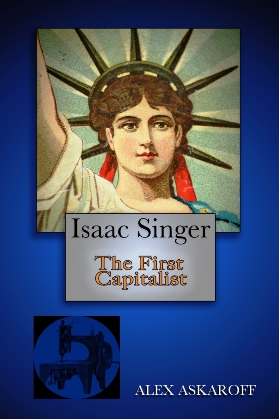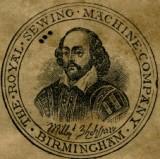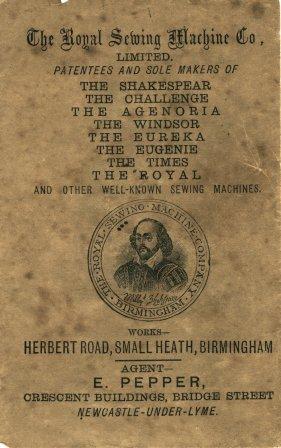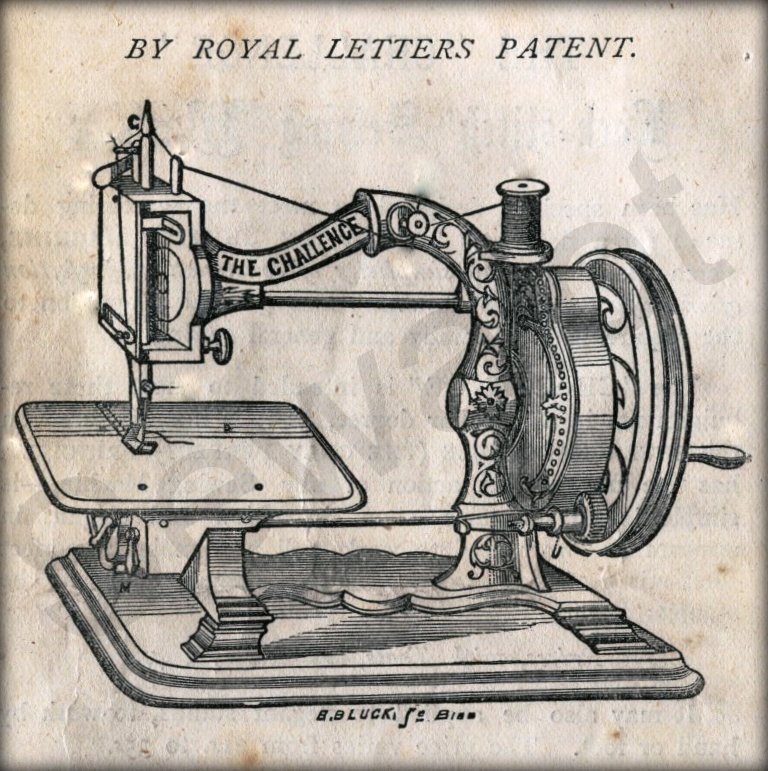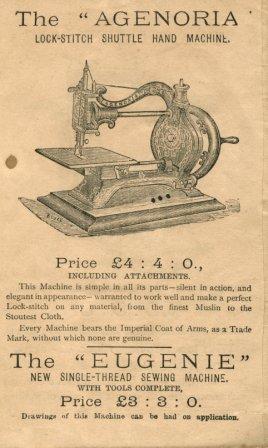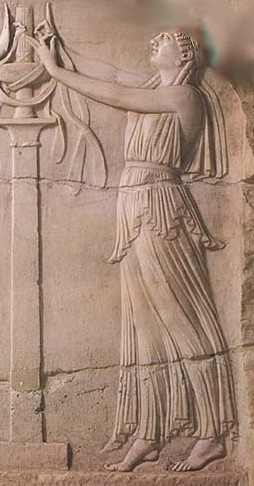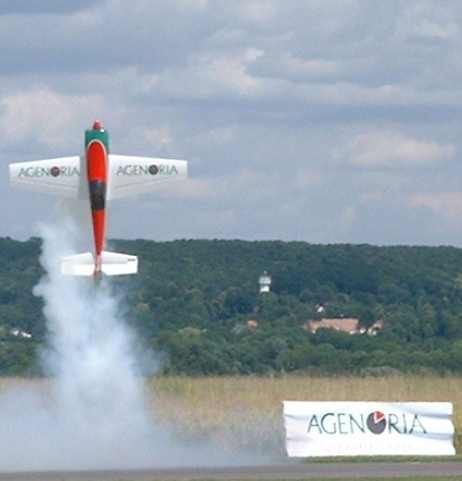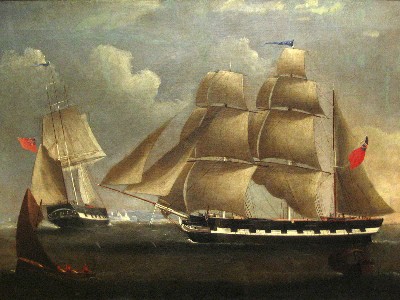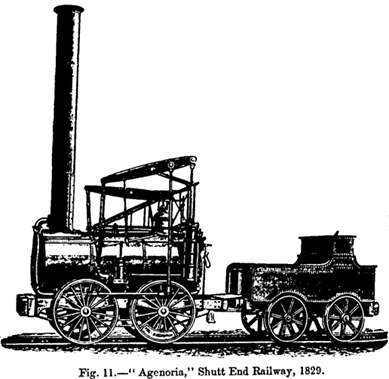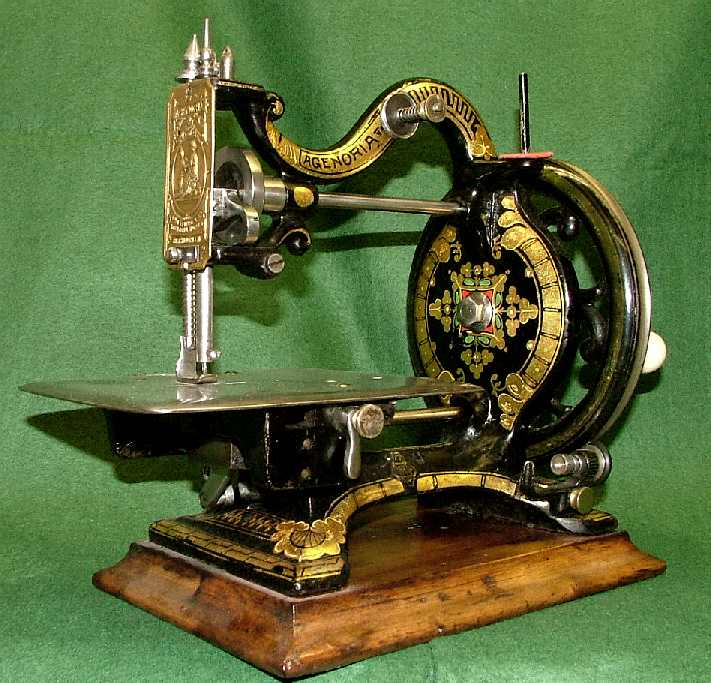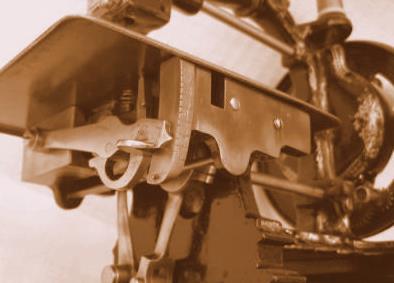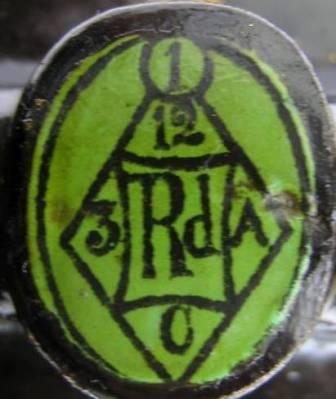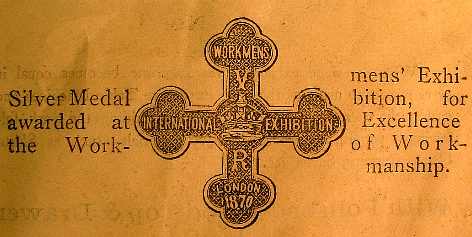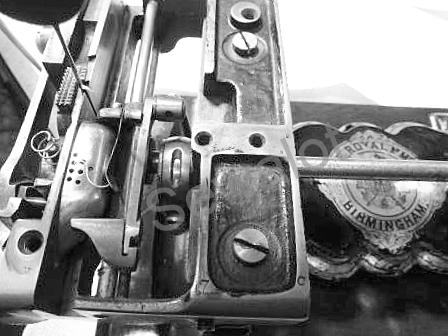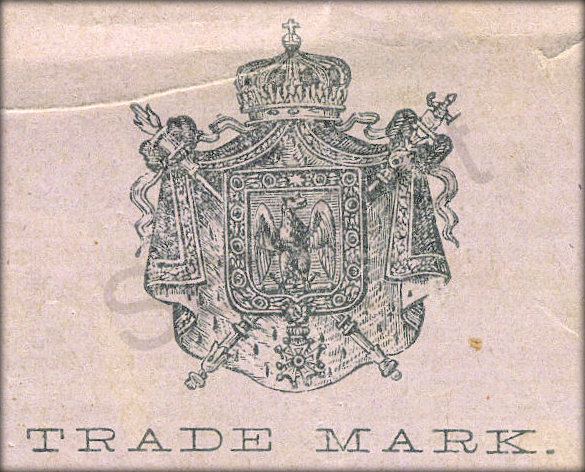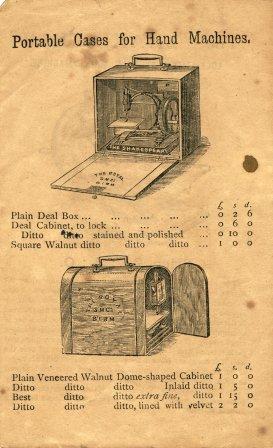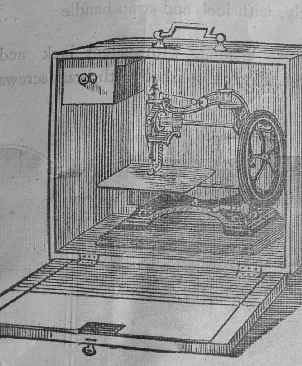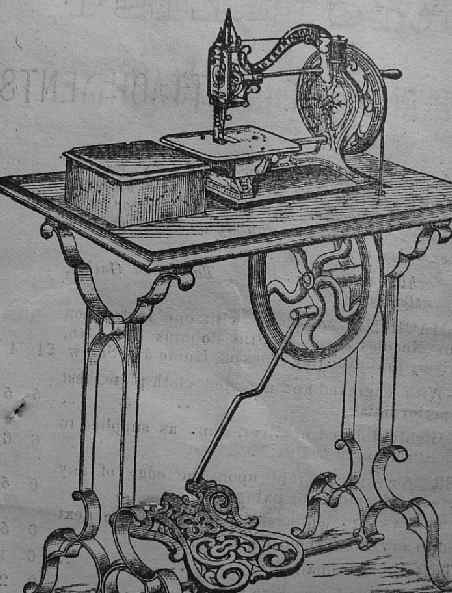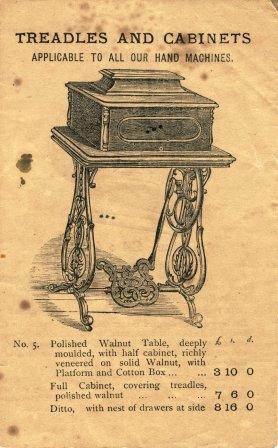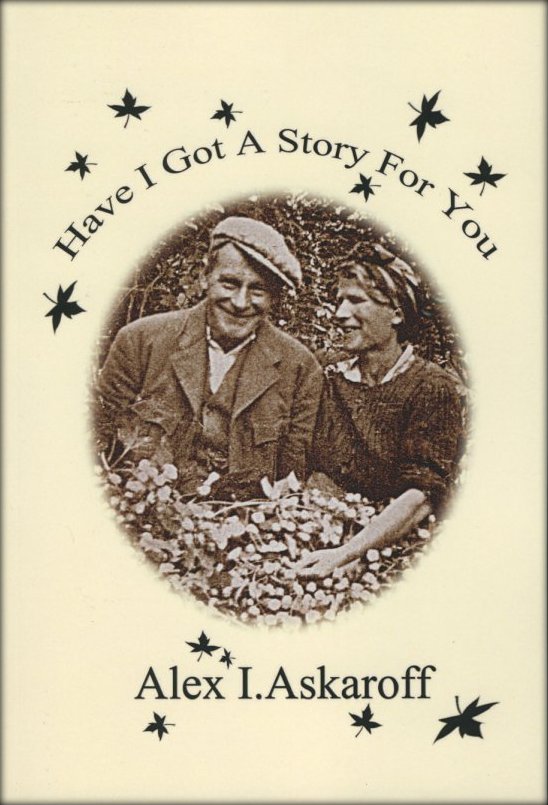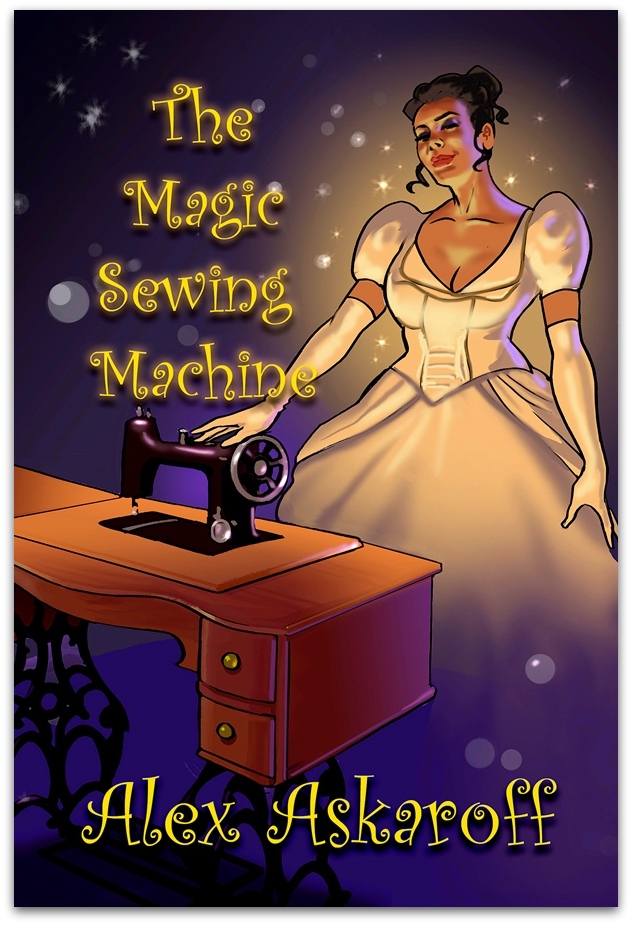|
|||||
|
|
Alex has spent a lifetime in the sewing industry and is considered one of the foremost experts of pioneering machines and their inventors. He has written extensively for trade magazines, radio, television, books and publications world wide. See Alex Askaroff demonstrating antique sewing machines on YouTube
http://www.youtube.com/watch?v=8-NVWFkm0sA&list=UL
Most of us know the name Singer but few are aware of
his amazing life story, his rags to riches journey from a little runaway
to one of the richest men of his age. The story of Isaac Merritt Singer
will blow your mind, his wives and lovers his castles and palaces all
built on the back of one of the greatest inventions of the 19th century.
For the first time the most complete story of a forgotten giant is
brought to you by Alex Askaroff.
The Challenge Sewing Machine
The Challenge sewing machine was manufactured by the Royal Sewing Machine Company. It was on sale from around 1870 as treadle or hand sewing machine.
However the story gets mixed as companies merge buy each other out and combine during and explosive period of boom and bust in the Victorian era.
The Challenge was made exclusively for Joseph Harris & Co, read on, I guarantee you'll need headache pills...
The machine came with a host of attachments and later a patented stitch indicator.
A first class lock-stitch machine of perfect manufacture
Joseph Harris
1870
The Challenge sewing machine was a beautiful piece of British engineering and commands high prices whenever they do appear on the market.
The Challenge Knight. His glove has been cast down in challenge and he waits with his sword ready for combat. Nearly all Challenge sewing machines had this brass side plate. A heraldry expert may know what armour and house our knight is from. He is possibly St George.
Now before we get to Joseph Harris and The Royal Sewing Machine Company of Small Heath, Birmingham, England, and the machines they produced, we must talk about the Agenoria.
The reason is that the Agenoria sewing machine was around slightly before the Royal Sewing Machine Co bought out the company that made it. The machines and companies are closely intertwined. It will become clear I promise.
This page will give you the history of some of the most beautiful sewing machines ever-made and then incorporate the Royal Sewing Machine Co and Challenge sewing machine into its story. It is brief but interesting period of Middle England and British engineering.
The Royal Sewing Machine Company was, in its time, a successful middle England firm that hand-built superb and collectible machines. The ones that survive today fetch excellent money when they do appear on auction sites. And it is no wonder they epitomised Victorian perfection in engineering and they were built to withstand time itself.
The Royal Sewing Machine Co was responsible for the manufacture of many models. They were patentees makers of the following:
The Royal Milton
The Avon
The Times
The Monarch
The Regent
The Shakespear
The Challenge
The Agenoria (once it bought the rights)
The Windsor
The Eureka
The Eugenie
The Royal
The South Kensington
So now let us get to the Agenoria sewing machine one of the favourites in my collection and her connection to Challenge.
The Agenoria
Agenoria
or Agenora was the Roman Goddess of Silence and Industry giving relief
from pain and anxiety. She was a popular goddess among the industrious
Romans and also the protector of The
goddess has inspired many people over the centuries with ships, steam
engines and many others being named after her. Arthur Isaac Maxfield gave the Agenoria name to his factory as well as his most stunning sewing machine. The Agenoria was designed in the 1860’s when beauty and practicality went hand in hand. The Victorian
Agenoria has often been called the most beautiful sewing machine ever
made.
Considered one of the most beautiful sewing machines ever, excuse the dust! I call it protection from ultraviolet. The superb Agenoria sewing machine design was registered in 1869 and patented on Aug 20th 1870. The Agenoria sewing machine was originally manufactured by Arthur Isaac Maxfield at his Agenoria works in Birmingham
In fact Maxfield
actually advertised the machine as the Patent Loose Wheeled Model. The
first models went on sale for the princely sum of £4. 4s. (Four pounds
and four shillings) around two months average wages in 1870! Wow, can you
imagine paying that today for a sewing machine. It just goes to show how
important they were.
On the brass needlebar cover of the Agenoria was a Registered Design lozenge for 24th February 1869 (just beneath the machine's name). On many models this was on the casting itself. Below is an image of the Goddess Agenoria herself sitting beside a lion while quietly working.
The brass end-plate showing the Goddess Agenoria and date lozenge. The
Agenoria sewing machine was an instant success winning the silver medal of excellence at
the International London Exhibition of 1870. Later a special silver
plated model was presented to Her Royal Highness the Princess of Wales.
She loved the machine and gave her seal of approval to the
Agenoria. The Agenoria then became by Royal Appointment. Copies
of these silver plated models were sold for £6. 6s. The attachments were
silver plated on all m Winners of the silver medal in 1870 Maxfield must have run into financial problems or been offered a price he could not refuse for he later sold the Agenoria to The Franklin Sewing Machine Company of Park Road, Soho, Birmingham. They produced Maxfield’s machine at the Franklin Works,
The Challenge
Sewing Machine At last we
get to Joseph Harris and his connection with
Joseph Harris was born in Birmingham in 1831 and had worked at the Handsworth Draper's run by George Briggs. This founding in the sewing trade would give Joseph Harris a keen eye when it came to ordering his own sewing machines later in his career. He knew what his customers wanted.
Later Joseph went to work for his uncle, still in the rag trade, but this time dying cloth. By the age of 24 Joseph had come into a sum of money and used it to put a down-payment on his uncle's business and over the next few years bought him out lock-stock and barrel. Joseph Harris was expanding fast, he had a good grounding in the rag-trade and by 1866 he was already selling sewing machines through his stores, bought from wholesalers and agents. Joseph Harris later became an agent for several makes of sewing machine. As well as a successful businessman and entrepreneur Joseph Harris was a designer and designed and registered his own treadle base for his sewing machines and several other minor but useful improvements to his own Challenge sewing machine.
Joseph Harris By 1872 Joseph Harris had struck a deal with the Royal Sewing Machine Company, then run by Shakespear and Illeston, to supply a unique machine, called Challenge, direct to his stores. And so the Challenge Sewing Machine was born. This was a
brilliant idea as it meant that he could sell a sewing machine at a
reasonable profit that no one else had and so no one could undercut him
as no one else supplied it.
Agents for
Challenge Sewing Machines Joseph Harris did so well with the Challenge, sold through his stores, that he was ordering over 2,000 sewing machines a year. By the early 1870's Joseph Harris was not only selling his Challenge sewing machine to his customers but actively seeking agents around the world and selling the machine to other wholesalers.
Keen to exploit the huge and expanding demand for good sewing machines Joseph Harris took over the Franklin Sewing Machine Company. Now at last we can see all the pieces of the messy puzzle coming together. Under the Franklin Sewing Machine Company with the help of John Judson, Joseph Harris continued to improve upon the Challenge sewing machine. However recession and competition was looming and his initial expansion failed to continue so he decided to concentrate on his still very profitable cloth-dying and fabric business.
The Royal Sewing Machine Company
It was formed
by Thomas Shakespear (no e on the end) & George Illiston in 1868.
The Challenge sewing machine was sold with several different treadles By
incorporating all the machines including the Challenge and the Agenoria Their
factory was at
The machines were sold to dealers such as Cole & Co of
They also supplied machines marked with other businesses names to some
larger suppliers such as
Collier
& Son sewing machines in
The most profitable agent was E. Pepper of Crescent Buildings, Bridge Street, Newcastle-Under-lyme. All these machines
are immediately identifiable as made by the Joseph Harris, though out of the sewing machine manufacturing side since 1875, carried on in the rag-trade handing his business down to his son. He died in Handsworth in 1913 just at the outbreak of the Great War. He was 82.
The
collapse of the Royal Machine Manufacturing Co
made little news at the time as all the
papers were focused on the brutish murders in Whitechapel by the
infamous Jack the Ripper. While the company may have faded into history they have left behind a legacy of some of the most beautiful sewing machines of all time. Confusing
or what! But like many companies profits go up and down, factories merge
and close, businesses get swallowed up. The Challenge sewing machine was
one small cog smack in the middle of a fascinating period of British
engineering. OUT NOW! Most of us know the name Singer but few are aware of his amazing life story, his rags to riches journey from a little runaway to one of the richest men of his age. The story of Isaac Merritt Singer will blow your mind, his wives and lovers his castles and palaces all built on the back of one of the greatest inventions of the 19th century. For the first time the most complete story of a forgotten giant is brought to you by Alex Askaroff. News Flash! Alex's books are now all available to download or buy as paperback on Amazon worldwide.
"This
may just be the best book I've ever read."
"My five grandchildren are
reading this book aloud to each other from my Kindle every Sunday.
The way it's written you can just imagine walking
beside him seeing the things he does. News Flash! Alex's books are now all available to download or buy as paperback on Amazon worldwide.
|
||||
|
Well that's it, I do hope you enjoyed my work.
I spend countless hours researching and writing these pages (complete
with mistakes) and I love to hear from
people so do drop me a line and let me know what you thought
or if you have anything to add: alexsussex@aol.com
CONTACT: alexsussex@aol.com Copyright © Hello Alex, |
|||||
|
|
|
|
|||
